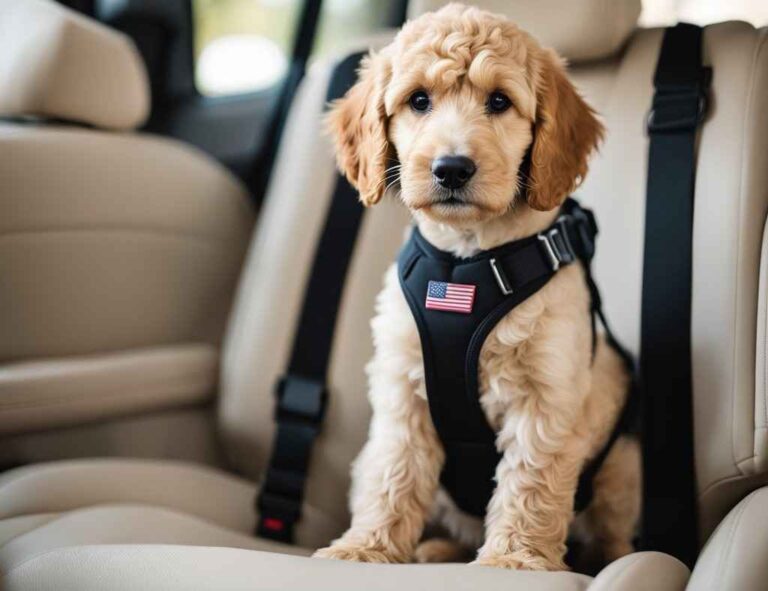Are Australian Labradoodles Hard to Potty Train?

When it comes to potty training, Australian Labradoodles are generally known for their intelligence, which can make the process smoother than with some other breeds. As with any puppy, the key to successful potty training lies in consistency and positive reinforcement. Your Australian Labradoodle’s eager-to-please nature will play to your advantage, as these dogs are often very responsive to their owners’ cues and can be quite easy to train when the right methods are employed.
Starting the potty training journey, your priority should be establishing a regular routine and sticking to it. Since Australian Labradoodles can thrive with structure, you’ll find that taking them out at the same times each day, especially after meals and naps, will help reinforce where and when it’s appropriate to go to the bathroom. Moreover, because they are intelligent dogs, they are able to make the connection relatively quickly between the spot you’ve chosen for their potty breaks and the action you expect from them there.
It’s also beneficial to understand that while potty training any puppy, including an Australian Labradoodle, may have its challenges, preparing yourself with the right information, such as effective potty training methods and understanding common mistakes to avoid, can empower you to handle these developmental stage with confidence. With the right training approach, your Australian Labradoodle puppy can quickly adapt to the family’s routines, making the potty training experience a positive one for both of you.
How you can Potty Train Australian Labradoodles?
Australian Labradoodles are regarded as an intelligent and family-friendly breed, making them a good candidate for potty training. Success hinges on recognizing their needs and establishing reliable routines.
Do we need to understand Potty Training Challenges?
Understanding the unique challenges of potty training an Australian Labradoodle starts with recognizing the breed’s intelligence and temperament. As a breed known for being smart and social, they respond well to positive reinforcement but may become bored with repetitive tasks.
Are there any Potty Training Techniques?
Emphasize the importance of consistency and routine in potty training. Employ a schedule for feeding and bathroom breaks, and use praise and treats to reinforce good behavior. Recognize the signs your puppy may show when they need to go, such as barking, sniffing, or whining.
What are the Potential Training Setbacks and Solutions?
Accidents will happen; clean up messes promptly to prevent lingering odors that might encourage repeat behavior. If inconsistencies in training occur, reset with persistence and patience, maintaining a steady approach to re-establish habits.
Are there any Important Factors Influencing Potty Training?
Consider factors such as age, as younger puppies require more frequent breaks. The breed’s need for exercise and socialization also plays a role; an active Australian Labradoodle is more likely to maintain good potty habits if these needs are met.
How you can Create a Conducive Home Environment?
Set up a conducive home environment for your pet by designating a potty area and using crates as a den to instill a sense of safe space. Supervise your puppy closely to promptly address their needs and prevent accidents.
Are there any Health Considerations Affecting Potty Training/
Health issues, including allergies and sensitivities common in Australian Labradoodles, can affect potty training. Proper grooming and diet are integral to ensuring your dog is comfortable and less distracted during the training process.
You have to go for the Right Training Resources
Select effective training resources, from bells that signal it’s time to go outside to apps and guides specifically crafted for this breed. If challenges persist, consider enlisting the help of a professional trainer.
Try to ensure Long-term Potty Training Success and Maintenance
Ensure long-term success by transitioning from puppy-specific training to routines suitable for an adult family dog. Continue to provide opportunities for practice and reinforcement to solidify good potty habits.






